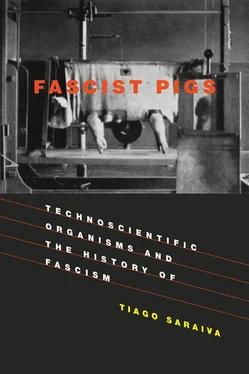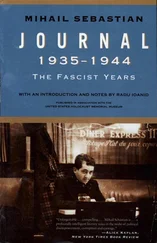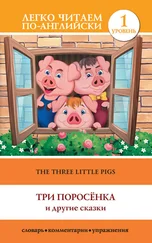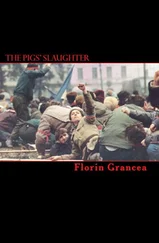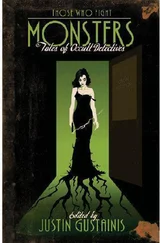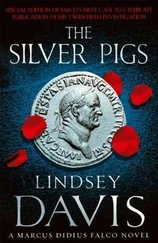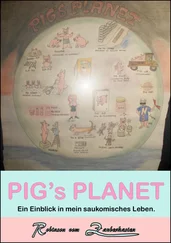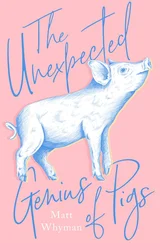Cristophe Bonneuil, “Science and state building in late colonial and postcolonial Africa, 1930–1970,” Osiris 15 (2000): 258–281.
Saraiva Bravo, A Cultura Algodoeira , pp. 233–234.
On the qualities of the U4, see Quintanilha et al., “Variedades de algodão cultivadas,” p. 21.
Quintanilha, “Variedades de Algodão,” pp. 20–22.
Instituto do Algodão de Moçambique, “Departamento de Classificação de Algodão,” Relatórios, Actividade do Instituto do Algodão de Moçambique nos anos de 1962 a 1967: 43–53, Arquivo do Instituto de Apoio ao Desenvolvimento (AIPAD). MU/PP/20.
Quintanilha, “Variedades do algodão.”
Aurélio Quintanilha, “Homologias cromossómicas no Género Gossypium” (Instituto do Algodão de Moçambique, 1966).
António Cabral, “Relatório do Departamento de Citologia e Genética relativo ao ano de 1957,” JEA, Centro de Investigação Científica Algodoeira, 1958, AIPAD 5.2260.
Aurélio Quintanilha, O Problema Algodoeiro Português e a Actividade do Centro de Investigação Científica Algodoeira (Academia das Ciências de Lisboa, 1966).
For a general discussion of failures of state schemes with some examples from agriculture projects, see James C. Scott, Seeing Like a State: How Certain Schemes to Improve the Human Condition Have Failed (Yale University Press, 1998).
Isaacman, Cotton Is the Mother of Poverty , p. 43.
Secret correspondence between Gabriel Teixeira, Governor of Mozambique, and the Minister of Overseas (Ministro do Ultramar) for the year 1951: Arquivo Nacional Torre do Tombo (ANTT), Arquivo Salazar (U/7-a).
The authorities recognized the problem but acknowledged the death of only 200 Mozambicans. See Fortuna, O Algodão de Moçambique , pp. 152–154.
Secret correspondence between Gabriel Teixeira, Governor of Mozambique, and the Minister of Overseas (Ministro do Ultramar) for the year 1951: ANTT, Arquivo Salazar (U/7-a).
J. Fonseca George, “Concentrações Algodoeiras,” in Trabalhos do Centro de Investigação Científica algodoeira (Minerva, 1948).
Ibid., pp. 7–9.
M. Anne Pitcher, “Conflict and cooperation: Gendered roles and responsibilities within cotton households in northern Mozambique,” African Studies Review 39 (1996): 81–112.
Saraiva Bravo, A Cultura Algodoeira , pp. 114–115.
Instituto do Algodão de Moçambique, Relatórios. Actividade do Instituto do Algodão de Moçambique nos anos de 1962 a 1967 (IAM, 1968), AIPAD.
P. Pereira de Carvalho, 25 anos de melhoramento do algodoeiro em Moçambique—1952–1976 (Instituto de Investigação Agronómica de Moçambique, 1976).
Pitcher, “Conflict and cooperation”; Centro de Estudos Africanos, A transformação da Agricultura familiar na província de Nampula (Universidade Eduardo Mondlane, 1980).
René Pélissier, Campanhas coloniais de Portugal, 1844–1941 (Estampa, 2006).
On massacres in Mozambique committed by the Portuguese, see UN General Assembly, Report of the Commission of Inquiry on the Reported Massacres in Mozambique, 1974.
Himmler to Körner, May 1944, Bundesarchiv, Persönlicher Stab Reichsführer-SS, NS 19/2596, “Unterbringung des Gestüts und der Karakul-Schafherde von Dr. Schäfer in Ungarn.” The tittle of Landesbauernführer corresponded to Körner’s rank in the structure of the Reichsnährstand as responsible for the Saxony Landesbauernschaft.
Hungary was occupied by German troops in March of 1944.
This straightforward methodology of following sheep around is much inspired by Sarah Franklin’s Dolly Mixtures: The Remaking of Genealogy (Duke University Press, 2007). If this is an obvious reference for sheep in STS, environmental history also has very good examples of narratives built around sheep; one of these is Elinor G. K. Melville’s book A Plague of Sheep: Environmental Consequences of the Conquest of Mexico (Cambridge University Press, 1994).
In 1924 there were no more than 40,000 whites in Angola, in a territory 14 times the size of Portugal.
Valentim Alexandre, “Ideologia, economia e política: a questão colonial na implantação do Estado Novo,” Análise Social (1993): 1117–1136; António José Telo, Economia e império no Portugal contemporâneo (Cosmos, 1994).
In Canada and Siberia, for example, mink and fox farmers would progressively replace hunters as frontier folk producing animal skins for international markets. See L. Adametz, El Carnero Karakul (Talleres de Publicación de la Dirección Meteorológica, 1914), pp. 3–5. Environmental historians have published well-known accounts of the relevance of such shifts; one of these is William Cronon’s exemplary narrative of the conversion of the buffalo range into ranchland, Nature’s Metropolis: Chicago and the Great West (Norton, 1991). Other narratives have paid attention to hunting practices on the frontier and their connections to conservationist measures such as the 1900 Convention for the Preservation of Wild Animals, Birds and Fish in Africa; see, e.g., William Beinart and Peter Coates, Environment and History: The Taming of Nature in the USA and South Africa (Routledge, 1995), pp. 17–33; William Kelleher Storey, Guns, Race, and Power in Colonial South Africa (Cambridge University Press, 2008).
Gustav Frölich and Hans Hornitschek, Das Karakulschaf und seine Zucht (F. C. Mayer, 1942), p. 25.
Whereas Donna Haraway suggested in The Companion Species Manifesto (Prickly Paradigm, 2003) that human-dog relations should be taken seriously, here I am making the case that human-sheep relations are important elements in the expansion of fascism.
On Nazi Germany and luxury consumption, see Irene Guenther, Nazi Chic? Fashioning Women in the Third Reich (Berg, 2004).
Robert Lewis Koehl, RKFDV: German Resettlement and Population Policy, 1939–1945: A History of the Reich Commission for the Strengthening of Germandom (Harvard University Press, 1957); Bruno Wasser, Himmlers Raumplanung im Osten: Der Generalplan Ost in Polen 1940–1944 (Birkhäuser, 1993); Metchild Rössler and Sabine Schleiermacher, eds., Der Generalplan Ost: Hauptlinien der nationalsozialistischen Planungs- und Vernichtungspolitik (Akademie, 1993); Aly and Heim, Vordenker der Vernichtung , p. 2.
Joachim Wolschke-Bulmahn, “Violence as the basis of National Socialist landscape planning in the ‘Annexed Eastern Areas,’” in How Green Were the Nazis? Nature, Environment, and Nation in the Third Reich , F.-J. Brüggemeier, M. Cioc, and T. Zeller (Ohio University Press, 2005).
Читать дальше
